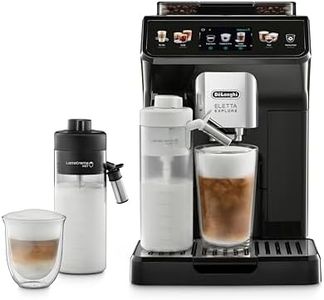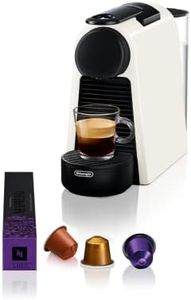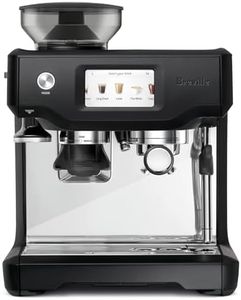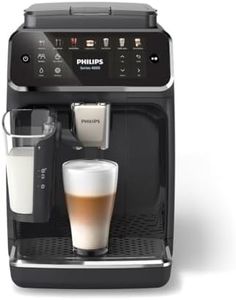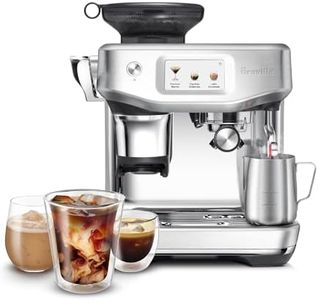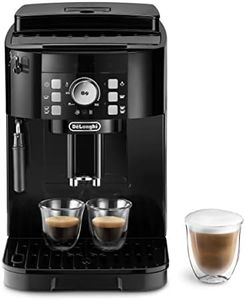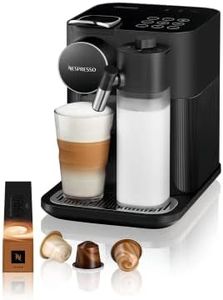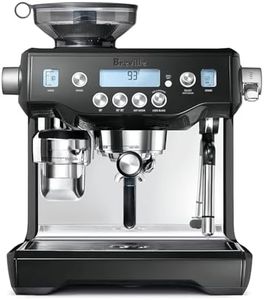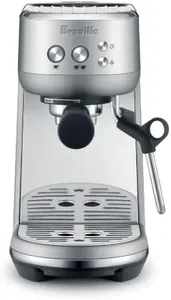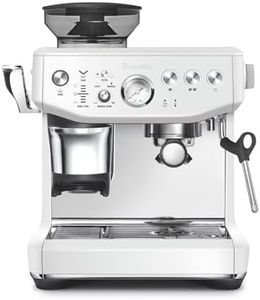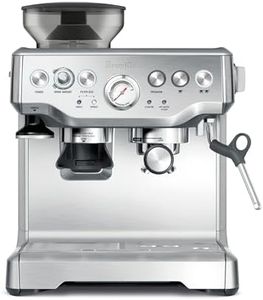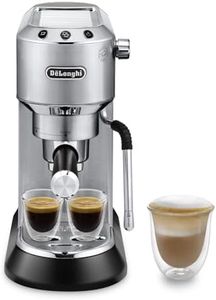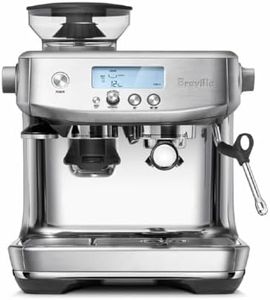We Use CookiesWe use cookies to enhance the security, performance,
functionality and for analytical and promotional activities. By continuing to browse this site you
are agreeing to our privacy policy
10 Best Home Espresso Machines
From leading brands and best sellers available on the web.Buying Guide for the Best Home Espresso Machines
Choosing a home espresso machine can be both exciting and overwhelming because there are many types and features to consider. The best fit for you depends on how much control you want over the brewing process, how often you plan to use the machine, and the kind of coffee drinks you like. Before buying, think about your daily coffee routine, your tolerance for complexity, and how much space you have in your kitchen. Focus on machines that match your experience level and interest in coffee making, whether you just want quick shots or enjoy the process of experimenting with different recipes.Type of MachineEspresso machines come in three main types: manual, semi-automatic, and fully automatic (including super-automatic). Manual machines give you complete control but require more skill, making them ideal for enthusiasts who enjoy mastering the art of espresso. Semi-automatic machines balance control and convenience, allowing you to manage the grinding and extraction time but automating basic functions—these are a good choice for those who want to learn but not be overwhelmed. Fully automatic or super-automatic machines do everything at the push of a button, from grinding beans to frothing milk, which is perfect if you love espresso but want simplicity and quick results. Consider how much effort you wish to put into each cup and how much control over the process you want when choosing the machine type.
PressurePressure, measured in bars, refers to how forcefully water is pushed through the coffee grounds to extract a shot of espresso. Most home machines operate at 9 to 15 bars. Machines with around 9 bars are sufficient for classic espresso; going higher can aid in crema formation but doesn’t always mean better taste. For most home users, staying within the standard range will ensure reliable espresso shots. Choose a machine with at least 9 bars of pressure for authentic espresso, but don’t be swayed by extremely high pressure ratings.
Boiler TypeThe boiler heats the water, and its type affects performance and recovery time. Single boiler machines require you to wait between pulling an espresso shot and steaming milk, while dual boiler machines allow you to do both simultaneously. There are also heat exchange systems, which use a single boiler to handle both tasks at once but may need some skill to manage temperatures. If you make mostly espresso, a single boiler will suffice. If you love milk-based drinks like cappuccinos and want to prepare them quickly, look for dual boiler or heat exchange systems.
Milk Frothing SystemSome machines have a built-in steam wand you operate by hand, giving you more control over milk texture, which is great for latte art and customized foam. Others offer automatic milk frothing systems, which are easier and faster but give less control over the end result. If you value convenience, automated frothing is ideal. If you enjoy learning and perfecting your technique, a manual wand is more suitable.
Grinder IntegrationSome espresso machines come with a built-in grinder, while others require a separate grinder. A built-in grinder saves space and simplifies the process, good for smaller kitchens or less experienced users. However, separate grinders often provide better grind consistency, which affects the taste and texture. If you want an all-in-one experience, opt for a machine with an integrated grinder. If you’re interested in experimenting or seeking top-quality espresso, consider buying a stand-alone grinder for more flexibility.
Size and CapacityEspresso machines vary considerably in size and water tank capacity. Smaller, compact machines fit well in tight spaces but may require more frequent refilling and might not handle back-to-back drinks as efficiently. Larger machines with bigger water and bean reservoirs are better for frequent use or serving multiple people. Consider your kitchen space and how many drinks you plan to make at a time to find the right balance between size and convenience.
Ease of CleaningEspresso machines require regular cleaning to maintain performance and flavor. Machines with removable drip trays, accessible water reservoirs, and fewer small parts are generally easier to maintain. Some models offer automatic cleaning cycles, which can save time and effort. Think about how much time you are willing to spend on maintenance—those who prefer quick routines should look for machines designed for easy cleaning.

